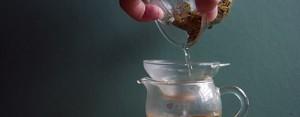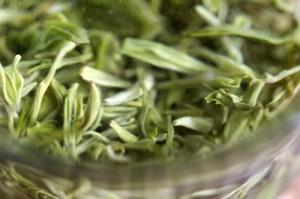Spoiler alert: the answer is NOT to add more milk and sugar.
If you read our writings, we are strong proponents of drinking tea straight, good tea can be consumed on its own.
Nor will we suggest in a masochistic sort of way that bitterness is the way to go, true connoisseurs acquire a taste for bitterness. Although it must be said that my tolerance for bitterness has increased over the years- provided that bitterness precedes sweetness.
Don’t rush to dump the tea or relegate it to the forgotten realms of your tea cupboard. Sometimes varying up the brewing parameters may do the trick.
The Fundamentals

The details are beyond the scope of this post however and we will only focus on the 3 that are most relevant to the subject.
i) Dissolved caffeine causes bitterness
ii) Dissolved polyphenol causes bitterness and astringency
iii) Dissolved amino acid causes briskness and sweetness
The content level of the 3 chemical compounds above is crucial to the taste.
Simply put, the higher the caffeine and polyphenol content, the more bitter and astringent it tastes.
However the wonder chemical amino acid- especially L-Theanine- adds the element of a brisk and sweet taste that can mitigate the caffeine and polyphenol.
The relationship of amino acid to polyphenol and caffeine becomes crucial to our understanding of brewing techniques.
Reduce Water Temperature
Intuitively, we know that the higher the temperature of the water, the easier it is for substances to be dissolved in it.
You don’t need a fancy lab to prove this, just observe the differences in dissolved instant coffee powder in boiling water versus water at room temperature.
In boiling water, you just need to stir for less than 10 seconds and substantially all of it dissolves while the powder may not dissolve completely in water at room temperature.
To be more precise though, we can refer to this table adapted from the excellent 茶与健康 edited by屠幼英.
Compound
100⁰C
80⁰C
60⁰C
Amount %* Amount %* Amount %*
Dissolved Substances 16.66 100 13.43 80.61 7.49 44.96
Free Amino Acids 1.81 100 1.53 87.29 1.21 66.85
Polyphenols 9.33 100 6.70 71.81 4.31 46.20
*Amount dissolved expressed as a percentage of to that at 100⁰C
This experiment is conducted with a premium grade Longjing tea aka a green tea.
At boiling temperatures, higher grade green teas tastes bitter and astringent. As seen above, the polyphenol dissolved gives the bitterness and astringency.
Interestingly, 87.29% of the free amino acids are dissolved while 71.81% of polyphenols are dissolved at 80⁰C.
In other words, when you reduce the water temperature, the sweetness (amino acid) falls by 12.71% while the bitterness drops by 28.19%. By reducing the water temperature for a tea that is high in polyphenols such as green tea, we are able to reduce the bitterness while maintaining a higher percentage of sweetness thereby boosting its proportion.
However, that is not to say that we use water at a low temperature since at 60⁰C, merely 44.96% of the substances are dissolved. That explains why tea that are brewed at too low a water temperature lack aroma and taste.
If it’s too bitter, try reducing the water temperature
Infusion Time
Wang Yuegen from China Agricultural Tea Research Institute used 3g of Longjing and infused it in 150ml of water at 3, 5 and 10 minutes respectively and measured the data below:
Compound
3 mins
5 mins
10 mins
Amount %* Amount %* Amount %*
Dissolved Substances 15.07 74.60 17.15 85.39 20.20 100
Free Amino Acids 1.53 77.66 1.74 88.32 1.97 100
Polyphenols 7.54 70.07 8.98 83.46 10.76 100
*Amount dissolved expressed as a percentage of to that at 10 minutes
While this experiment is harder to translate directly into brewing- we hardly brewing any tea other than white tea longer than 3 minutes- it does illustrate the solubility of free amino acid relative to polyphenols.
In practical times, a higher percentage of amino acid is dissolved quicker than polyphenols. Hence if the infusion time is increased, the ratio of polyphenols to amino acids increases, rendering a more bitter and astringent brew.
If it’s too bitter, try reducing the infusion time
Quantity of Tea Leaves
In 乌龙茶审评edited by 张木树, he provided this interesting table about the impact of quantity of tea leaves to water ratio.
He used 5 g of an unspecified oolong tea and measured out water quantities of the following levels to measure the dissolved substances.
Water quantity (ml) 50 100 150 200
Dissolved Substances (%) 27.6 30.6 32.5 34.1
Dissolved substances (g) 0.80 0.89 0.94 0.99
Dissolved substances/ water quantity* 0.016 0.0089 0.0062 0.00495
*I added this column for illustrative purposes
As you can see, while the amount of dissolved substances decreases with the reduction in water quantity, the decrease is not proportional.
Hence the concentration level renders the tea too strong which among other things could result in bitterness.
If it’s too bitter, try reducing the quantity of tea leaves
Wholeness of Tea Leaves
One reason why dust and fanning are used in tea bags is that it dissolves quickly. Research measured particles of tea leaves in the 850-1000 µm range dissolved 2.2 times as fast as those in the 500-600 µm range
Even if you drink only whole leaf tea, there may come a point, especially towards the bottom of the pack when you get mainly the broken bits, often comes back from transit, handling and such.
Hence if you measured out tea leaves that are predominantly broken bits, you can expect that the taste will be stronger.
The best way to counteract this is to reduce the infusion time since the substances dissolve faster anyway.
If it’s too bitter, try reducing the infusion time
However…….

Brewing tea is about finding the optimum balance, too little of the elements above and the tea taste insipid and flat. Sometimes you may need to vary the infusion time or temperature and get a different result as I did here.
There is also the possibility that the tea is just rather rough- for example summer Assam teas tend to be very bitter and astringent, you might well need milk and sugar to render it drinkable.
Or in the case of Puer, it needs aging.
This post is just meant to see how you can tackle it from the brewing end by toggling with the release of caffeine, polyphenols and amino acids.
Please click to see other articles related to brewing tea.
